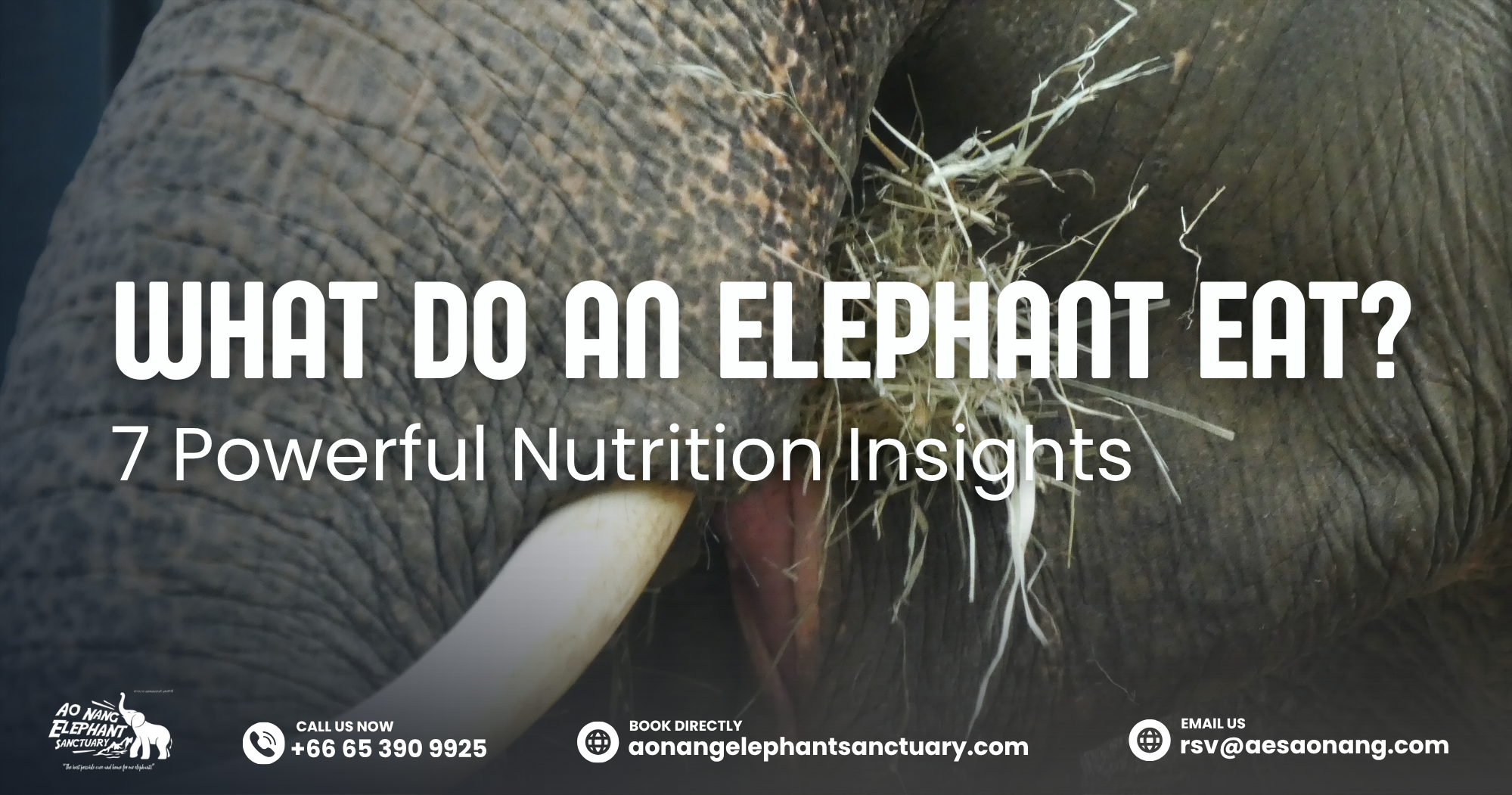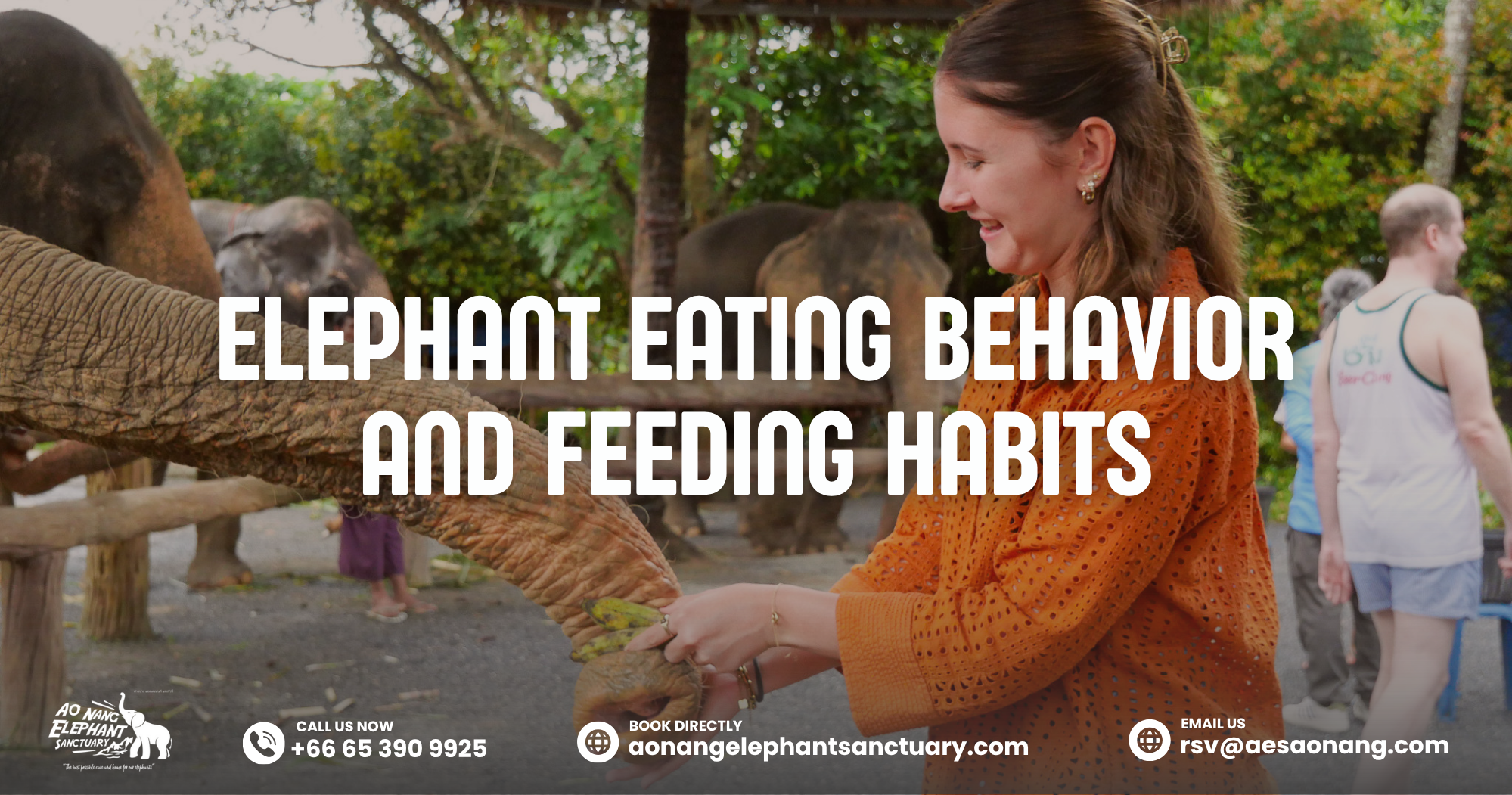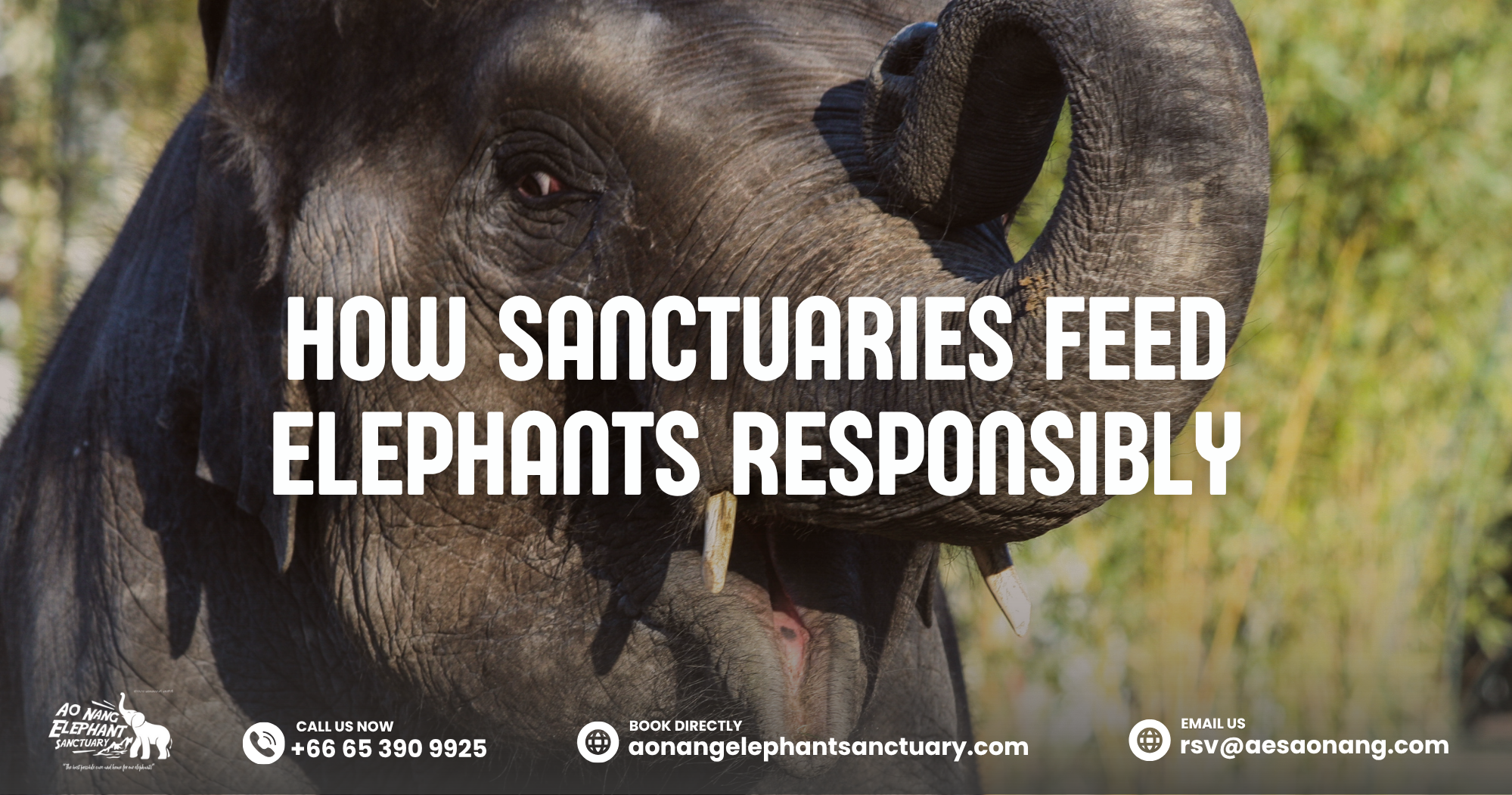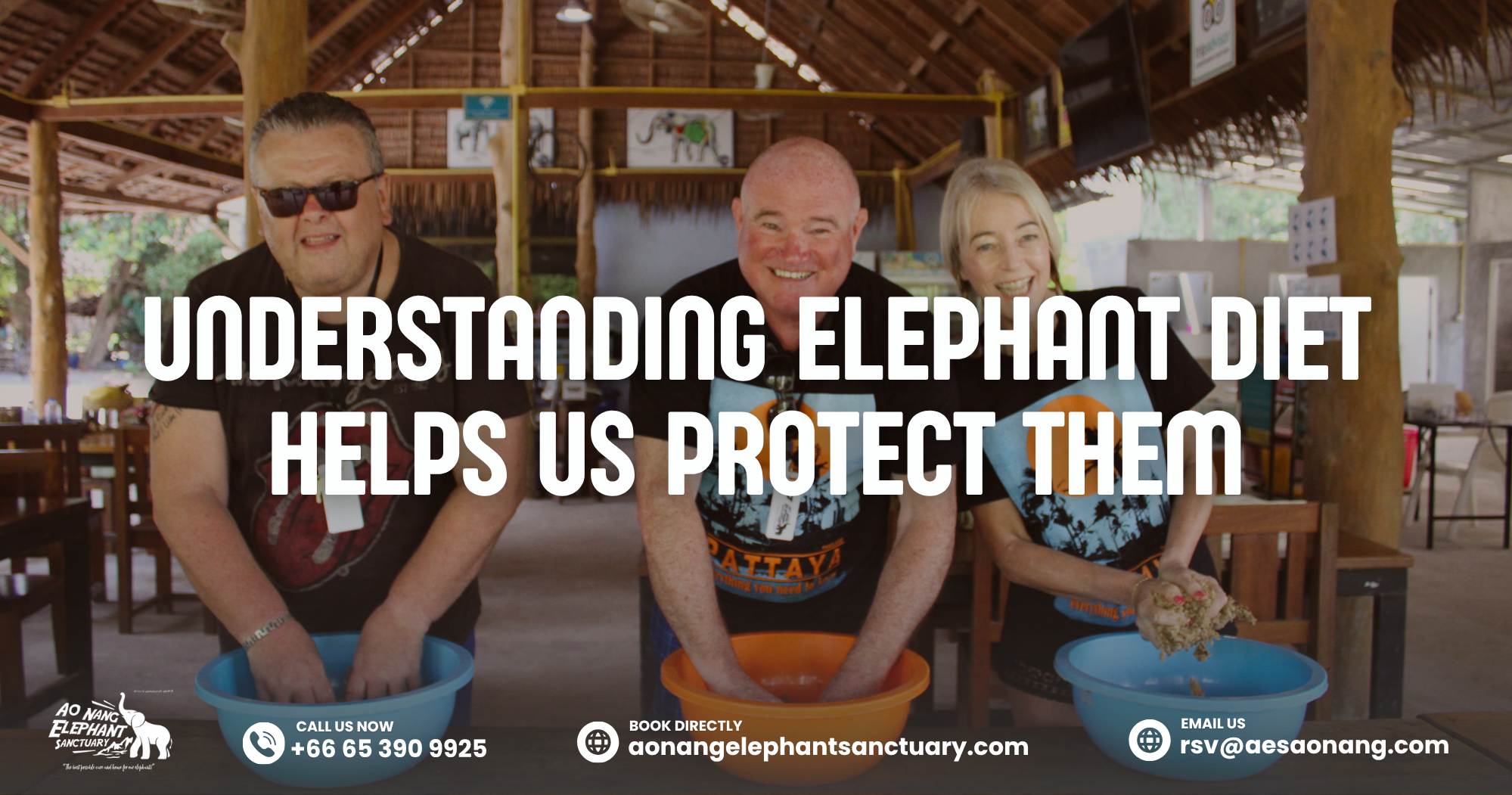Elephants are the biggest mammals living on land, which automatically implies a large amount of food they require to keep fit and lively. “What do an elephant eat?” is a question that naturally arises from their massive size and energy needs. Their diet is determined by their size, surroundings, social requirements, and natural behavior. Regardless of whether they are in the wild or a morally right elephant refuge, elephants’ eating is an indispensable aspect of their welfare.
The questions of what an elephant eats, how much it eats, and if it has a favorite food are common among people. By knowing the feeding habits of elephants, people get an insight not only into their amazing physical power but also into their tender nature.
This article covers knowing an elephant’s diet, looking at their eating behavior, and understanding how they choose their favorite foods.
What Do An Elephant Eat In The Wild?
Elephants in nature are herbivores, meaning their diet consists of plant material. They spend about 14 to 18 hours a day foraging. Due to their gigantic body, their food has to be both plentiful and diverse.
The most common foods for elephants include grass, leaves, bark, tree branches, roots, fruits, and seeds. They live in grasslands, forests, savannas, and jungles. As a result, elephants are in herds and, to meet their needs for food and water, take long journeys. Besides, their walking patterns open up new routes not only for them but also for other animals.
Elephant Eating Behavior And Feeding Habits
Elephants attach their trunk to the food and use it for grabbing, pulling, lifting, and bringing the food to their mouths. The trunk serves as a strong yet sensitive multi-functional tool. They:
- Destroy the bark on the trees using their trunk.
- Jerk fruits down from the towering branches.
- Excavate roots and earth for minerals.
- Cut down the branches and knock down the plants if needed.
Besides, their molar teeth are helpful in grinding the food. Throughout their lives, elephants change their molars number of their molars. When the last one wears out at old age, eating becomes hard; therefore, elderly elephants are given soft foods.
How Much Food Does An Elephant Eat Per Day?
The amount of food that elephants demand per day is extremely high. On average:
- Asian elephants consume 120–150 kg of food per day.
- African elephants can eat as much as 200 kg per day.
Additionally, they can be gulping 100 liters of water over the course of a whole day, especially when the weather is hot.
The fact is that elephants don’t fully digest the food they take in. Their digestive tract is designed for quantity rather than quality. That is why it only absorbs a little over 40% of the total nutrition from the food they eat. Thus, they have to be always eating.
What Is the Elephant’s Favorite Fruit?
Many elephants eat fruit with pleasure because it is both sweet and hydrating. Their most common likes are usually:
- Bananas
- Watermelon
- Pineapple
- Sugarcane
- Mango (seasonally)
The fruit must be offered in moderate amounts. Elephants in the wild do not usually eat a lot of sugary fruits daily. Ethical sanctuaries ensure that fruit is given as a nice treat and not as the main food.
Why Elephants Spend So Much Time Eating
Elephants consume a lot, and their digestion is slow. Thus, they have to keep eating all day long. Their continuous feeding has several advantages:
- Helps to keep their energy levels stable
- It is a good source of protein and bone material
- Contributes to good water intake
- Facilitates movement and social interaction
Besides, nature-wise, feeding is done collectively, and thus, it is not only a social bond-strengthening practice but also a way of teaching young ones how to use their trunks and choose good food.
How Sanctuaries Feed Elephants Responsibly
Nutrition is one of the main areas that ethical elephant sanctuaries emphasize. They provide the same types of food as would be eaten by elephants in the wild. A healthy diet is a supporting factor for digestion, joint strength, and general health over time.
At the sanctuaries, elephants may:
- Consume freshly cut grasses
- Eat banana trees (the stalk is both a source of water and fiber)
- Eat hay and leafy vegetables
- Eat small amounts of seasonal fruits
- Consume rice balls made with fiber-rich plant ingredients for senior elephants
The feeding of each elephant depends on their:
- Age
- Health condition
- Level of activity
- Dental condition
Perhaps elderly elephants need soft food because of worn molars. Sanctuaries ensure that they get the food, which is easy to chew and swallow.
Why Ethical Feeding Matters In Elephant Tourism
To make the elephants look more attractive to visitors, in certain areas they are given only sugary fruits. Although this may seem like fun to the tourists, it can negatively impact the elephant’s health in the long run.
Ethical sanctuaries never:
- Overfeed with fruit
- Feed with processed foods
- Indulge in pleasing behavior
- Allow unsafe visitor interactions
Feeding properly will promote the elephants’ natural behavior, good digestion, and a calm environment.
Visitor Experience: Feeding Elephants The Right Way
Feeding the elephants is probably a very touching part of the children’s visit to a sanctuary. Visitors under the supervision of the staff may be involved in the preparation and the provision of supplementary food. Thus, guests get to know the eating habits of elephants and learn the correct way of interaction.
While feeding:
- Visitors are located at a safe distance.
- Elephants come closer whenever they want.
- There is no forcing, use of chains, or command.
Moreover, visitors are taught to make nutrient-rich rice-and-herb balls, which are very beneficial for old elephants. Hands-on food preparation enables people to witness the daily work of animal care staff.
Understanding Elephant Diet Helps Us Protect Them
Elephants rely on a balanced diet not only for nourishment but also for maintaining their social and emotional well-being. Their food intake is deeply connected to how they interact with their families, how they move through forests and grasslands, and how they shape their environment. From grasses and fruits to bark and roots, every part of their diet supports their massive bodies and long lives. Understanding what elephants eat also teaches us why habitat protection and ethical care are essential.
If you’re interested in seeing how elephants eat and are naturally and respectfully cared for, consider visiting Aonang Elephant Sanctuary in Krabi. The sanctuary focuses on ethical, no-ride experiences where elephants roam freely and enjoy well-maintained diets suited to their needs. You’ll have the chance to observe them up close, learn from caretakers, and even help prepare their food—all while supporting responsible elephant welfare.
Plan your visit to Aonang Elephant Sanctuary and experience these gentle giants the right way—with respect, compassion, and love.
Reserve your spot now to get a chance to meet Asian elephants!
- Phone: +66 65 390 9925
- Email: [email protected]
- Book directly at aonangelephantsanctuary.com





